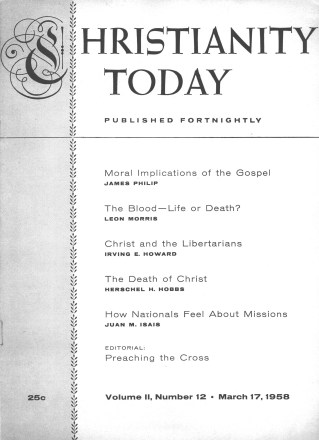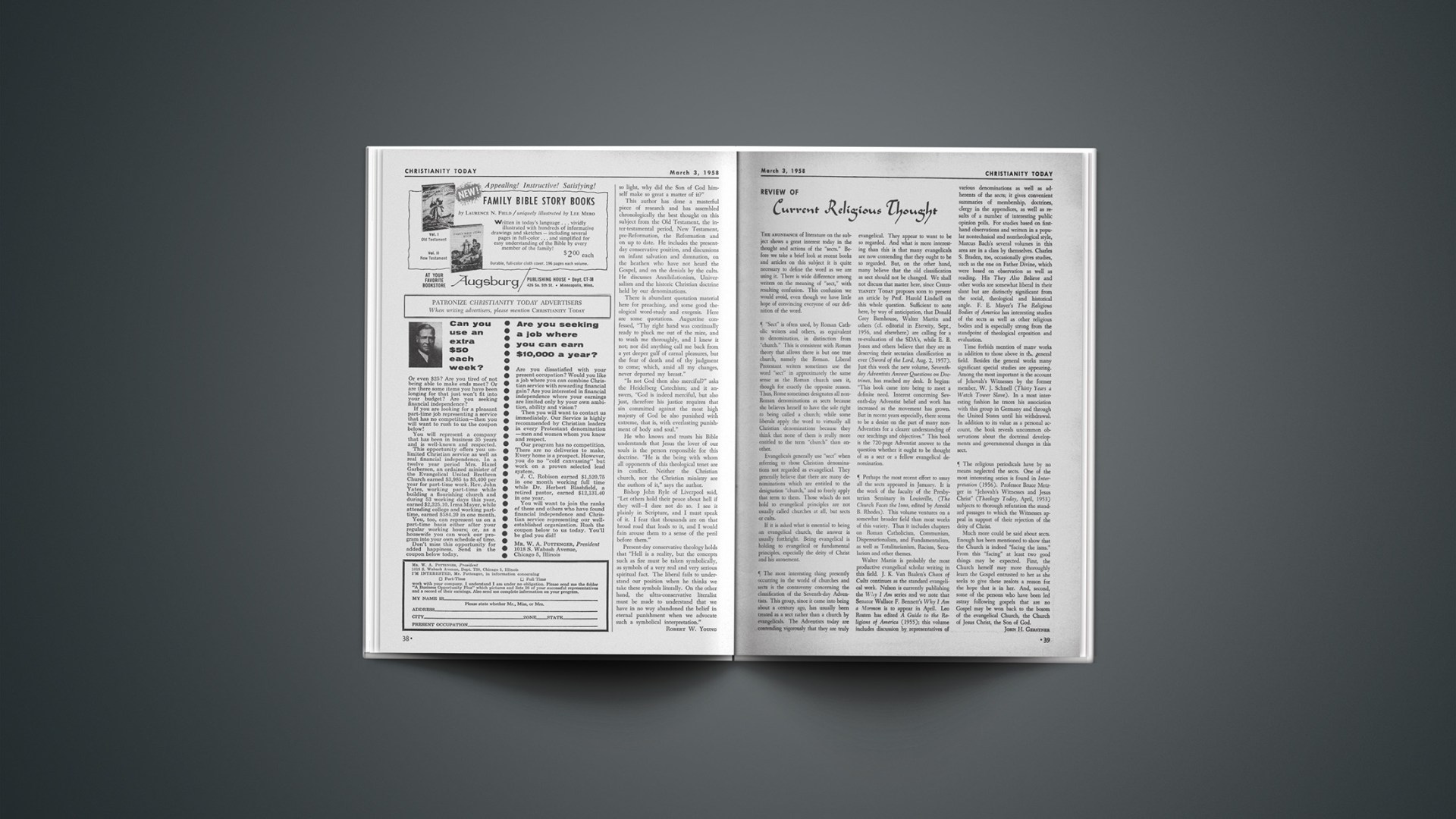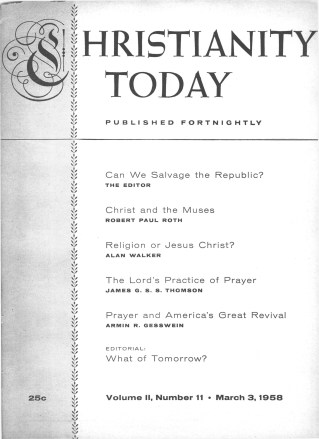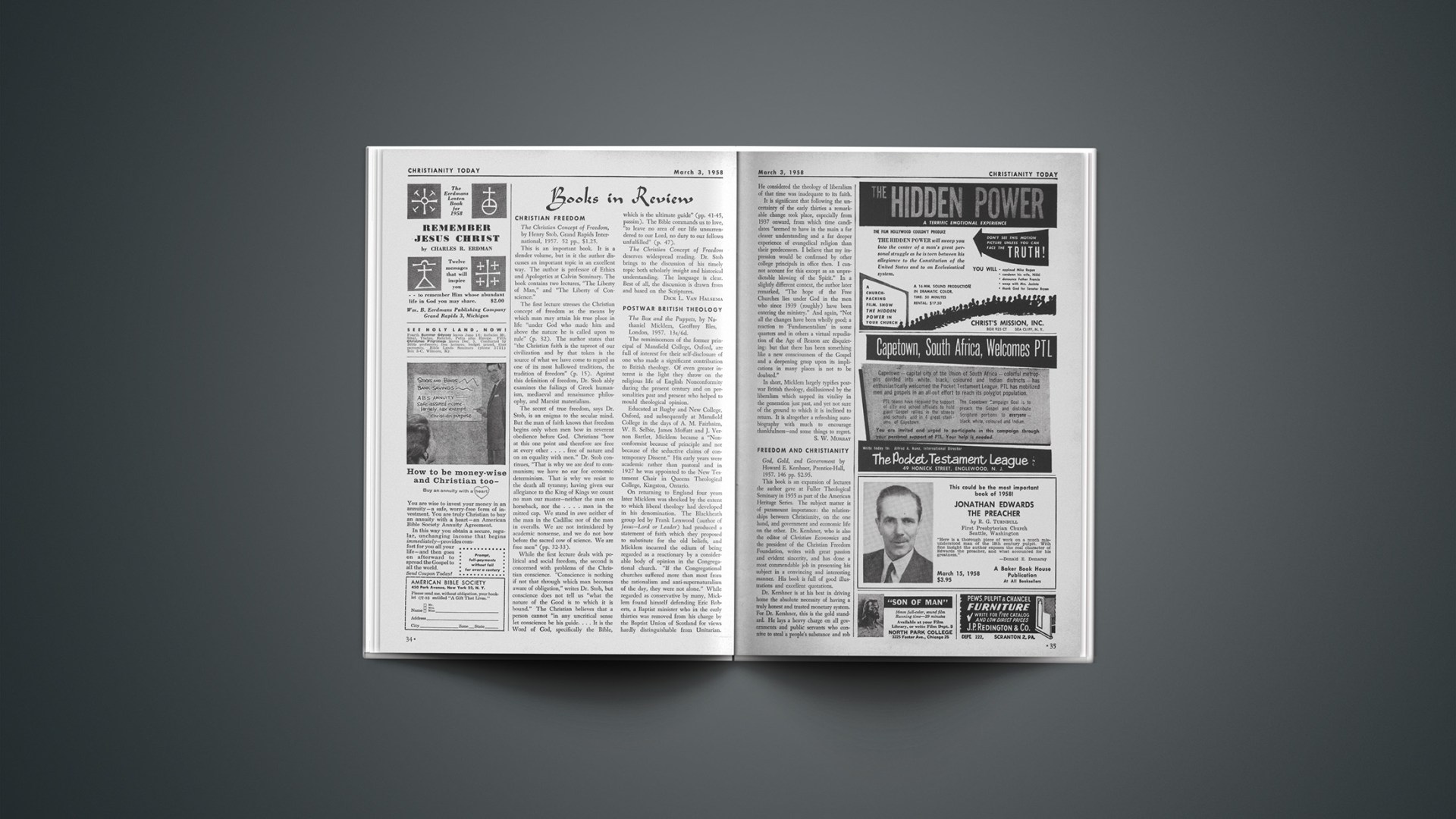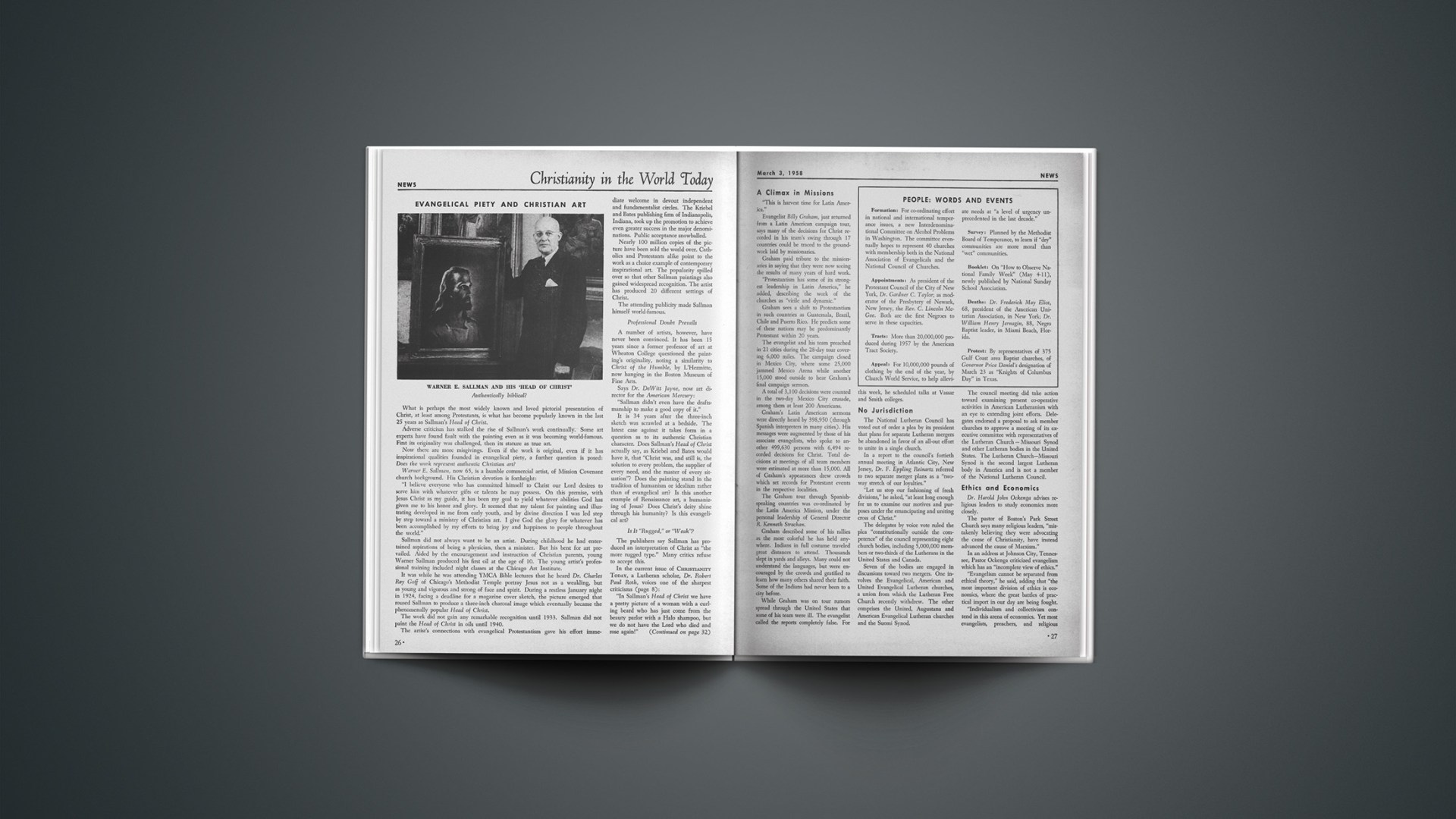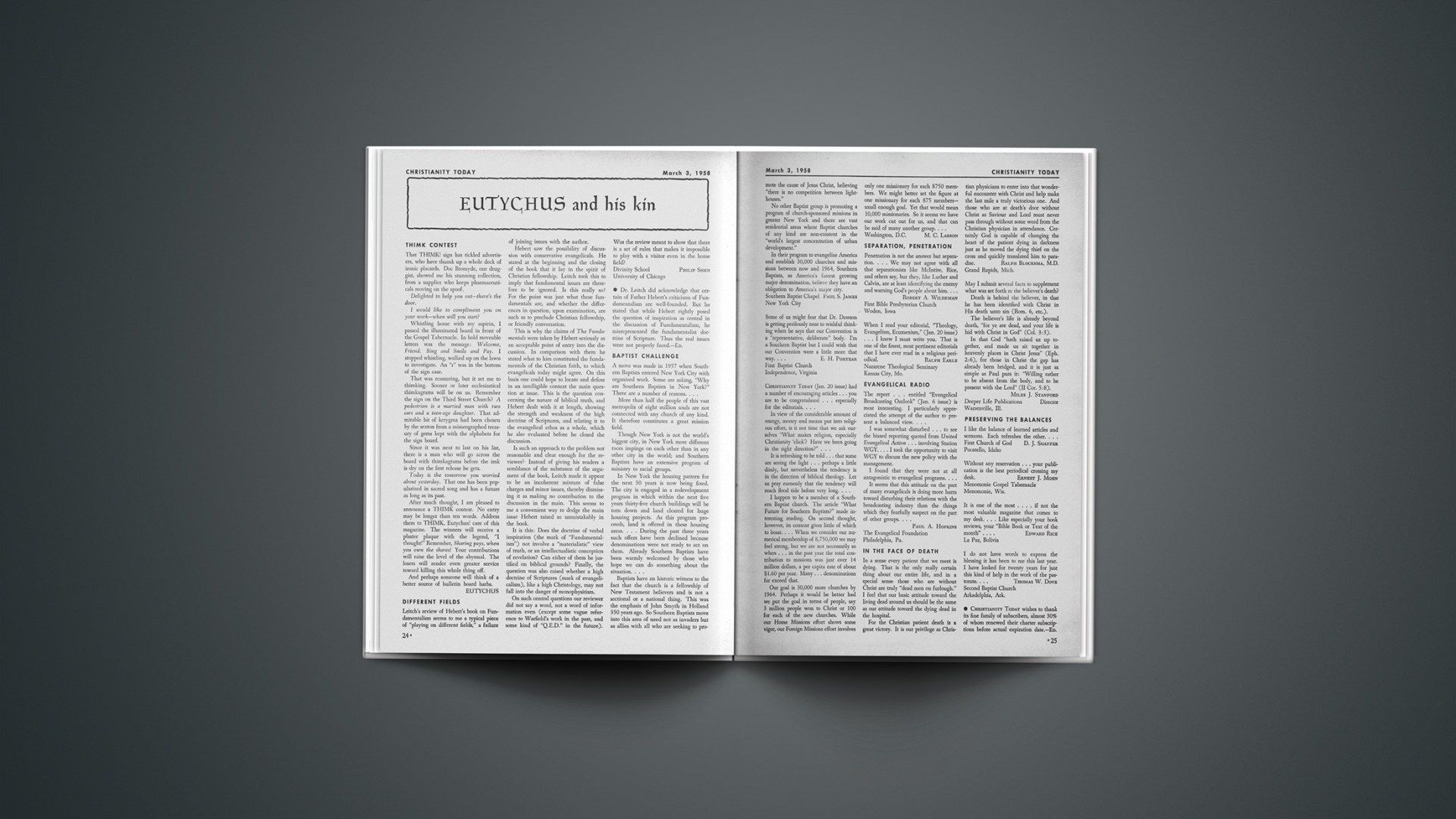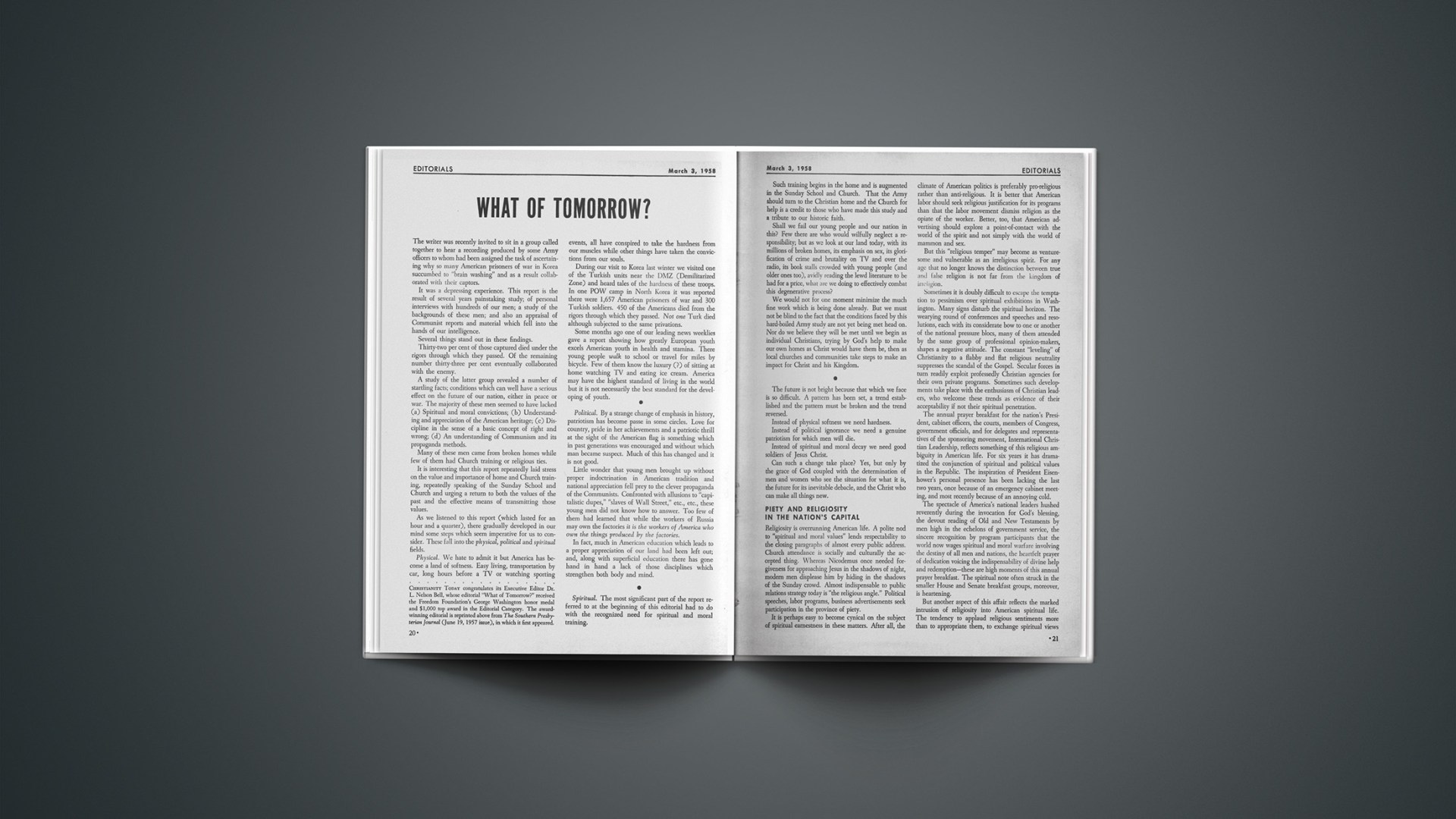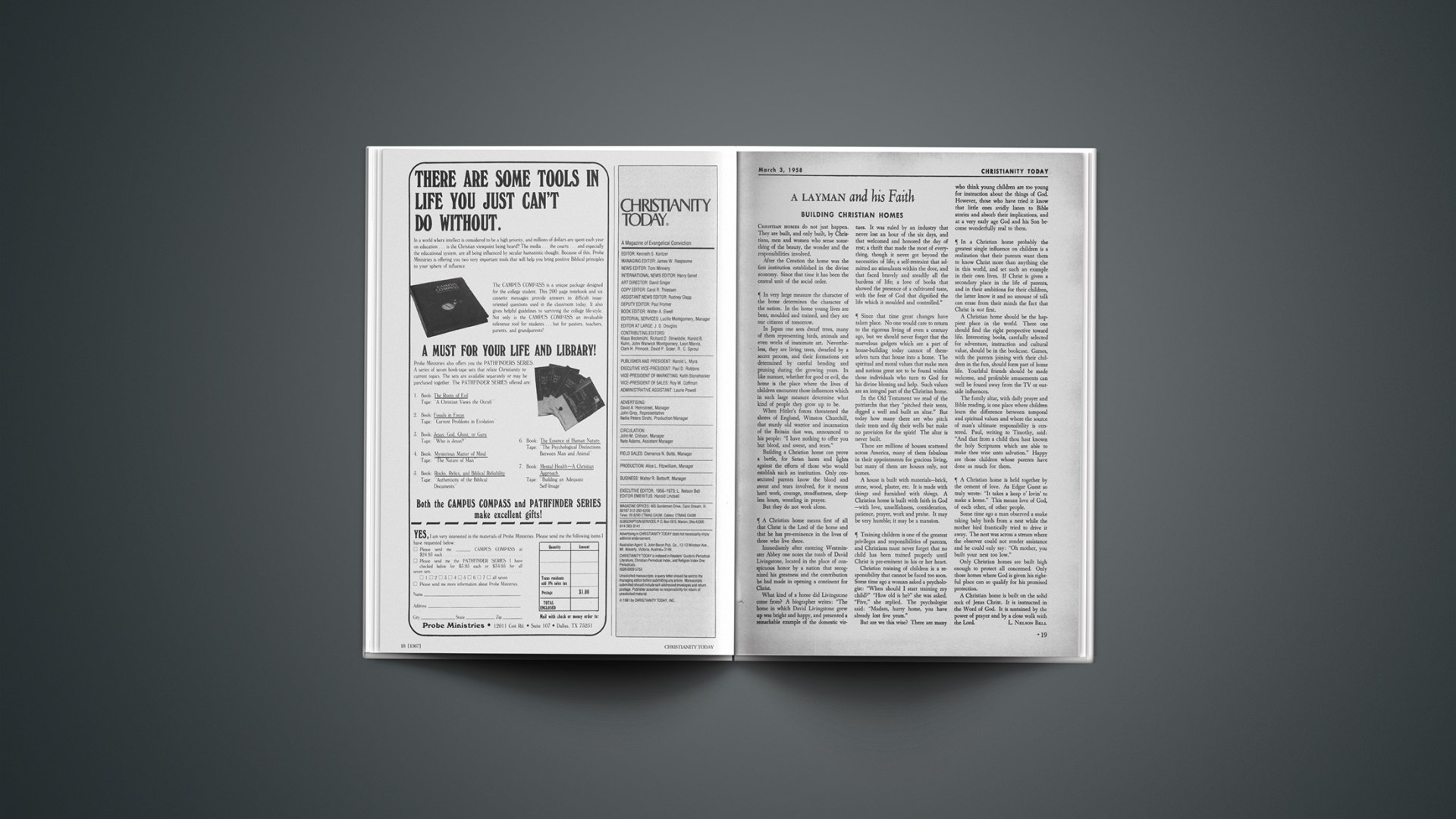Someone has said, “The only hope of Christianity is in the rehabilitation of Pauline theology. It is back to an incarnate Christ and the atoning Blood, or it is on to atheism and despair.” This is very fine, and doubtless would command general agreement among evangelical Christians. Our business, it would be said, is indeed to recall the Church to the faith once delivered to the saints. What is not so clear is how the content of that faith is to be defined, especially in its moral implications. Many are convinced that, for various reasons, the primacy of the ethical basis of the Gospel is in jeopardy today, and that evangelical Christians themselves need to be recalled to a more truly scriptural position.
This does not mean that the Church’s witness has deteriorated to a barren and lifeless orthodoxy. Indeed, there is no doubt that evangelical witness is intensely active. Rarely has the Church been so magnificently equipped, or so thoroughly up to date in methods. However, whether with all our streamlined techniques we have achieved as much as our forefathers accomplished without them is a question. Ours is an era of campaigns, missions, crusades, fruitful beyond doubt; and yet the age of our forefathers was the age of revival movements that left their mark upon nations and enabled the Church to speak with authority.
The Missing Note
Is there something lacking, then, in the contemporary evangelical testimony? We believe that a definite emphasis has been lost. Once the chief concern of spiritual work was the creation and upbuilding of Christian character. The great devotional literature of past generations in Scotland reveals something solid and substantial in the Christian experience of former days. That there were giants in the earth in those days is not surprising when we realize that Scotland’s sons were reared on classics like Boston’s Fourfold State and Guthrie’s Saving Interest, and that such titles were household words in almost every humble home in the land.
The evangelical piety, born of such influence, laid inflexible demands for the highest standards of Christian behavior, for probity of life, and, for uncompromising honor and integrity. We look in vain for such qualities today and are in danger of becoming content with a kind of spiritual adolescence that scarcely commends itself to intelligent people. Paul speaks in Ephesians of the measure of the stature of the fulness of Christ. Words like these lay upon us the duty of growing up, becoming men, and putting away childish things. We are suffering in our churches and fellowships from Christians who refuse to grow up into maturity and consequently are unable, as well as unwilling, to engage in the serious and urgent business of Christian witness and the discipline of prayer. Lack of depth and quality prevails.
How has this situation developed and what is the answer to it? Doubtless there have been several contributory causes. We would like to point out two in particular, before attempting to answer the problem.
The New Antinomianism
The first may be expressed in historical terms. The Church has from time to time been exercised and the purity of her faith imperiled by the heresy of antinomianism. And when the moral imperatives of the Gospel of grace become obscured, in the way suggested above, antinomianism in one or another of its forms has begun to undermine the vitality of its witness. As far back as the revival movements of the eighteenth century, which, according to historians, saved England from revolution, a significant trend may be traced that seems to have repeated itself frequently in Church history. When the glow and spiritual quickening of these early revivals had worn off, a slow hardening and petrifying of spiritual life began that, aided by the growing spirit of rationalism, gradually discredited the supernatural in religion and ousted it from its central place in the Gospel. The Christian faith became little more than an ethical system. The Gospel of the grace of God began to be eclipsed.
In the nineteenth century, the pendulum duly swung to the other extreme. Grace was recovered and supernatural religion came into its own again, but the reaction was such that men were saying, in opposition to previous moralistic tendencies, “Good works are useless; it is not what you do, but what you believe that is important.” This serious misunderstanding was furthered by misinterpretations of such words as “Ye are not under law but under grace,” which failed to understand that freedom from the law means to be “enlawed” inexorably to Christ. Ethical considerations became confused and ambiguous, and Christian behavior lost the supreme place given it in the New Testament.
The same process is being repeated in twentieth century evangelical reaction against nominal, moralistic forms of Christianity. As a result, a false antithesis between faith and works has come into being, giving rise to dangerous misunderstandings of, and confusion about, the true nature of biblical faith. Not that Christian behavior is “out” necessarily, but a different emphasis and definition, generally negative, have come about so that to many today Christian conduct is understood as the abstention from the more overt forms of worldliness. By such defective standards is Christian orthodoxy being measured and judged. Now, to be sure, evangelicals have maintained a more or less consistent witness against the recognizably outer forms of worldliness, such as certain kinds of entertainment and amusement. This doubtless has been necessary in a world that seems to have gone pleasure-mad; but there has been no corresponding thoroughness in dealing with the sins that blight and mar Christian life and fellowship: viz., strifes and envyings, petty animosities and jealousies, unholy ambitions, jockeyings for position, and secret intrigues, which all too often exist in Christian circles. These would indicate that our ethical values in the light of the Gospel are in jeopardy. That such “religion without morals” exists today no one deeply involved in Christian work would deny; and ugly thing that it is, it has contributed more perhaps than any other single factor to the discrediting of our distinctive testimony.
The Cult Of Frivolity
Another and very different trend also has contributed to and accentuated this phenomenon of “religion without morals.” There has emerged in our time an evangelical pattern that finds expression in lightsome, frolicsome, superficial Christianity, characterized by sentimental religious jazz and tinkling pianos. We are living through a time in which the cult of frivolity and entertainment bids fair to become the major factor in evangelical life when patter and humorous anecdote are the order of the day and platform jokesters are in danger of turning the pulpit into a variety stage. Comparing this frothy adulteration of the faith even at its best with the massive witness of our Puritan and Covenanting forefathers, one becomes aware why the present generation of Christians comes short of the high standards of the past.
But why, in fact, does this “pattern” tend to produce a “religion without morals?” The reason is this: Its emphasis is laid upon (subjective) experience, whereas our forefathers laid it upon character. The moral values of the faith have been overshadowed by the psychological, and this has undoubtedly led to a greater concern about happiness and “fulfillment” than character and conduct. (One has only to examine contemporary evangelical hymnology to see how true this is.) It is an eloquent commentary on the situation that in our churches today there are large numbers of Christians preoccupied, not to say obsessed, with the search for happiness. What they have not realized is that God is far more concerned with our sin than with our satisfaction; that the Gospel is not psychology but salvation; and that Christ died not primarily to make men happy but to make them holy. It needs to be reiterated most unambiguously that the central note in apostolic preaching is not “Jesus can satisfy the heart,” but “Christ died for our sins.” These two phrases in reality express the fundamental difference of emphasis between the new and the old theologies.
The Differing Aims
Actually, we are dealing with two radically different, if not opposing, aims. Modern preoccupations have inclined us to make happiness and contentment the chief end of life. We have proclaimed the message of grace as being the answer to man’s search for happiness. Modern man’s chief aim is to find happiness, but the fact that this desire is universal does not make it right, any more than the universal bias toward sin makes it excusable or right to sin. The aim itself is distorted. To look for happiness is itself essentially selfish and is doomed to failure from the outset. The Gospel is not the universal purveyor of happiness (it would be a justifiable criticism, if it were, to call it the opiate of the people!); it is the one effective answer to this distorted aim in man’s life, for it gives a man a new sense of direction, and enables him to perceive that his chief end, in the words of the Westminster Shorter Catechism, is “to glorify God and enjoy Him forever.” Our forefathers—and they were quite emphatic on the point—made the glory of God the consuming passion of their lives. They had a burning concern for the honor and glory of God’s name. Salvation for them meant that henceforth they should no longer live unto themselves, but unto him, not that they but that he should be satisfied. And, paradoxically, they found in this a happiness such as has all too often eluded our hungry hearts. Happiness is found only when we have ceased to look for it. It is a by-product, something that steals upon us when we are busy with something beyond ourselves. The happiest people are those whose vision has been captured by the realization that there is something higher and nobler than personal happiness in life.
Recovery Of Gospel Emphasis
This, then, must be the first step toward recovery—a new understanding of the purpose of the Gospel, a new realization of the moral imperative it lays upon man to live to the glory of God, as distinct from the psychological considerations that have obscured it. No significant advance in Christian witness can be made until this change is effected, for nothing less will succeed in reaching the root of the problem.
But how is this recovery to take place? Only through a return to true expository preaching. The unfolding of the Scriptures in the fulness of doctrinal content is a task which cries out urgently to be performed in our time and for which there can be no effective substitute. Evangelicals may protest that they have always been doing this, as witness the many Christian conventions and the large audiences they can command. A brief comparison between former times and the present makes it only too clear that the sustained, enriching expository ministry of the older divines has been replaced by the short twenty-minute talk replete with pithy humor, seasoned with anecdote, and “put over” by “personality” men. We have lost sight of the kind of preaching that depends upon nothing save the power of the Word itself and the promised unction of the Spirit. Serious attempt to tap the immense resources available in the Word of God for the building of character has been lacking. But, significantly, where such a full-orbed ministry is maintained, where no concessions are made to the easily tickled palates of modern Christendom, and where expository preaching is taken seriously, the results are always the same—not only does it produce fruit, but quality fruit. It builds Christians of caliber. God is faithful to his own Word.
And what, finally, of the content of such a message? Just this: Paul, writing to the Corinthians of his visit to them, says, “I determined not to know anything among you save Jesus Christ, and him crucified.” The Church of our day has yet to see what God can do through the all-embracing proclamation of this grand and glorious message which Paul describes as being both the wisdom and the power of God. Its threefold reference to justification, sanctification, and service, in which it answers the problems of sin, self and Satan, meets the total human situation in a way no other message can.
As to justification, the Cross deals with the very heart of man’s plight in the sight of God. For his problem is never merely his heart hunger and restless dissatisfaction, but his sin and his revolt and rebellion against the holy God of the Scriptures. As to sanctification, it tells us that the faith that justifies also unites us to Christ in his death and resurrection, and slays the old nature, the sinful self, and imparts new life in him. As to service, in which, to use Paul’s words, “we wrestle not against flesh and blood, but against principalities and powers,” we have yet to grasp in its fulness the meaning of the statement, “They overcame him (Satan) by the blood of the Lamb.” All this is involved in the preaching of Christ crucified. In the hands of consecrated men the Gospel of Christ is a power mighty through God to the pulling down of strongholds of sin and error inside the Church and outside it, and to the upbuilding of lives that can bear the scrutiny of God and man alike, and adorn the doctrine of God their Saviour in all things.
Uncreated Love
Why and how?
What and where?
Who is it
I sense hanging there?
Can He be God,
That wretched figure on the Cross?
Ah! Poor voluntary sufferer,
Is it love
That causes you to suffer so?
And what a love!
Not caritas
Nor ego-centric eros
Nor the other-flowing philos,
(Which at best is love of self reflected in a friend).
But agape divine,
Unmerited, unknown, incomprehensible,
Self-sacrificing love.
The uncreated irreducible
Substantia divine,
That stands at the very center of the Universe;
Wholly other, yet wholly mine!
Then this it is that fills
Men with the trust,
That enables me to surrender
Life and motion every night,
And to sink unafraid
Into the waves of sleep,
That little death, Thanatou hypnos,
Without one guarantee in earth or heaven,
That I shall ever waken,
Ever rise,
Short of the Resurrection of the Dead.
JOHN C. COOPER
James Philip holds the M.A. degree from Aberdeen University and is minister of Gardenstown Parish Church in Banffshire, Scotland. He edits the Prayer Bulletin of the Scottish Evangelistic Council. Student work is his special interest.


